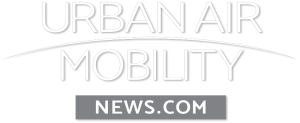
According to Research Intelo, the global urban air-mobility radar-network market size was valued at USD1.2 billion in 2024 and is projected to reach USD8.6 billion by 2033, expanding at a CAGR of 24.5% during 2024–2033.
“This extraordinary growth trajectory is primarily fueled by the rapid proliferation of urban air mobility (UAM) solutions, including air taxis and drones, which are revolutionizing urban transportation and logistics,” according to a press release from the research agency. “The increasing urbanization, coupled with technological advancements in radar and communication systems, is driving demand for sophisticated radar-network infrastructures that can ensure safe, efficient, and regulated airspace management for a new era of aerial mobility.
“As this industry progresses from concept to early deployment, the need for sophisticated surveillance and traffic management systems becomes critical. Among these, urban air-mobility radar networks act as the invisible safety infrastructure that enables real-time monitoring, navigation, collision avoidance, and traffic orchestration in dense airspace. The Urban Air-Mobility Radar-Network Market, therefore, is positioned at the foundation of smart aerial city transportation ecosystems.
“As aviation manufacturers shift towards pilot-optional systems to lower operational costs, radar networks must provide autonomous sense-and-avoid capabilities. Accurate environmental perception is essential to replace or augment human situational awareness, making radar networks a must-have safety layer….Aviation authorities worldwide are developing frameworks for Urban Air Traffic Management (UATM), including mandatory tracking and monitoring systems. Regulatory requirements for real-time geo-fencing, anti-collision protocols, and flight authorization systems are accelerating investments in radar infrastructure. Modern digital radar systems use millimeter-wave frequencies, phased-array technology, and machine learning to detect small fast-moving aerial vehicles amid urban clutter. This technological maturity lowers deployment barriers and makes radar networks economically viable.
“Urban environments create significant radar interference from buildings, reflections, and multi-path signals. Designing networks that can interpret clean and reliable data in such dense urban structures remains a major technical challenge. Radar networks must integrate seamlessly with satellite navigation, cellular networks (4G/5G/6G), and emerging UATM platforms. Achieving interoperability across providers and regions requires harmonized standards that are still evolving.”
For more information
https://researchintelo.com/report/urban-air-mobility-radar-network-market

